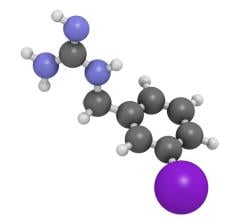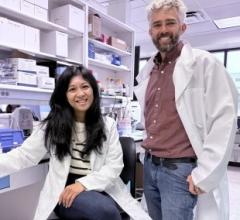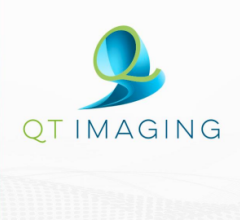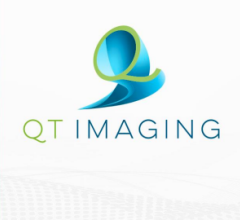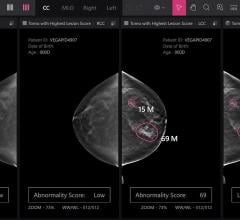
In a 10-year study of women who received radiation therapy to treat early-stage breast cancer, those receiving fewer, larger individual doses experienced similarly low rates of late-onset side effects as those undergoing conventional radiation therapy. Findings from the multi-institutional U.K. FAST clinical trial was at the 60th Annual Meeting of the American Society for Radiation Oncology (ASTRO).
“This study says it’s possible to find a regimen that would allow early-stage breast cancer patients to be treated only once a week over five weeks rather than daily over the same time period,” said Murray Brunt, M.D., a professor of clinical oncology at University Hospitals of North Midlands and Keele University in the U.K., and lead author of this study. “Findings should help doctors discuss risks and benefits with their patients for various courses of radiation therapy and inform shared decision-making between physicians and patients.”
The study is a long-term report of the FAST (FASTer Radiotherapy for breast cancer patients) trial, which was designed to assess changes in healthy breast tissue following conventional radiation treatment compared with two shorter regimens that delivered higher doses of radiation in fewer sessions. The trial, led by The Institute of Cancer Research, London, enrolled 915 women with early-stage invasive breast cancer at 18 centers across the U.K. from 2004 to 2007.
Initial trial results of the FAST trial, published in Radiotherapy and Oncology in 2011, indicated that once-weekly, hypofractionated therapy led to similarly low normal tissue effects as conventional therapy at two years following treatment. The current study confirms that these similarities persist for an additional eight years.
“These results support treatment options that are more convenient for patients, resulting in fewer hospital visits and less expensive health services, without increasing the risk of long-term side effects,” added Joanne Haviland at The Institute of Cancer Research, London, and the study’s senior statistician.
Patients in the trial were randomly assigned to one of three regimens of whole-breast radiation therapy following breast-conserving surgery: conventional treatment with 50 Gray (Gy) of radiation delivered in 25 daily, 2 Gy fractions delivered over five weeks; or hypofractionated treatment with one of two doses: 30 Gy delivered in five, once-weekly fractions of 6 Gy each, or 28.5 Gy delivered in five, once-weekly fractions of 5.7 Gy each. After treatment, patients were evaluated annually for effects to healthy breast tissue including skin reactions, hardening of the breast and changes in breast conformation and size.
Rates of moderate or severe long-term effects to normal tissue were low across all treatment groups. Severe effects were observed in 13 of the 774 women (1.7 percent) with follow-up data at five years, and nine of the 392 women (2.3 percent) with follow-up data at 10 years. No changes or minor changes in normal tissue were observed in 88 and 86 percent of women at the five- and 10-year marks, respectively.
Late normal tissue effects were not statistically different between the conventional therapy group and the five-fraction 28.5 Gy group at five years or 10 years following treatment. Moderate/severe late effects to normal breast tissue were higher, however, for patients who received the five-fraction, 30-Gy regimen. These patients were two to three times more likely to experience moderate/severe instances of breast shrinkage (p<0.001), hardness (p=0.004), fluid build-up (p<0.001) and spider veins (p=0.02).
Among patients on the conventional, daily-fraction arm, physicians observed normal tissue effects in 7.5 percent at five years and 9.1 percent at 10 years. By comparison, rates for the five-fraction 30-Gy arm were 18.0 percent at five years (p<0.001) and 18.4 percent at 10 years (p=0.04).
“The profile of adverse effects to normal breast tissue was similar between the 28.5 Gy and 50 Gy groups, but rates were higher after 30 Gy given in five fractions over five weeks,” said Brunt. “This disparity is rooted in differences between the two regimens in fractionation sensitivity. The sensitivity of 30 Gy delivered in five fractions over five weeks was equivalent to a total radiation dose of 57.3 Gy in 2 Gy fractions, while 28.5 Gy delivered in five fractions over five weeks was roughly the same as 52.5 Gy in 2 Gy fractions.” Calculation suggests that 27.75 Gy delivered in five fractions over five weeks would be equivalent to 50 Gy in 25 fractions over five weeks.
Researchers also assessed how the early-stage invasive breast tumors responded to surgery and radiation. The 10-year local relapse rate for all patients in the trial was 1.3 percent (95% CI 0.7, 2.3), with only 10 events reported in total, balanced between the treatment groups. The trial was not designed to test differences in relapse rates between treatment groups.
Following these results, the research team is now investigating radiation therapy with five fractions delivered over five consecutive days. “As a next step, we want to investigate shortening the radiation therapy schedule to one week,” explained Brunt. “A schedule like this would have significant clinical and practical implications, such as allowing radiation therapy to be integrated more closely with surgery and other therapies.”
Despite FAST and similar trials supporting the use of accelerated radiation treatment for breast cancer, large numbers of eligible patients in the U.S. are not receiving, and likely not being offered, shorter courses of radiation therapy. A 2013 JAMA study found an adoption rate of approximately 30 percent in the U.S., and a 2017 analysis for Kaiser Health News indicated that fewer than half of patients over age 50 with early-stage disease receive the accelerated treatment. The current ASTRO clinical guideline for whole breast radiation therapy, which was issued earlier this year, recommends hypofractionated therapy for breast cancer patients regardless of age, tumor stage and whether they have received chemotherapy.
For more information: www.astro.org
Resources on Breast Cancer and Radiation Therapy
- Digital brochure: Radiation Therapy for Breast Cancer; (Spanish version)
- Videos: Radiation Therapy for Breast Cancer; (Spanish version), An Introduction to Radiation Therapy; (Spanish version)
- ASTRO’s clinical practice statements and guidelines
- Additional brochures, videos and information on radiation therapy from ASTRO’s patient site, RTAnswers.org


 November 17, 2025
November 17, 2025 


